Girona Cycling Guide: Routes, Tips & Everything You Need to Know
Discover Girona’s best cycling routes, practical tips, and essential insights for planning your perfect ride through Spain’s top cycling region.

Quick Links
Welcome to the Mecca of European cycling!
Girona is widely recognised as one of Europe’s top cycling hubs, attracting thousands of amateur cyclists each year and serving as a long-term training base for more than 100 professional riders.
Its strategic location between the Pyrenees and the Mediterranean makes it uniquely positioned for world-class road, gravel, and leisure cycling.
Cycling here not just a hype — but a combo of these advantages:
Extensive road network: Over 1,500 km of well-paved, low-traffic roads, offering everything from steady endurance loops to high-intensity climbing routes.
Notable climbs: Home to some of Spain’s most recognised training climbs, including Rocacorba (avg. 10% gradient), Els Àngels, and Mare de Déu del Mont, all easily accessible from the city.
Year-round riding conditions: A mild Mediterranean climate with around 300 sunny days per year makes Girona a reliable destination in every season.
High-quality gravel: Vast sections of Les Gavarres and the surrounding countryside offer hundreds of kilometres of well-maintained gravel roads, ideal for mixed-terrain riding.
Cycling infrastructure: Girona has one of the highest densities of bike shops, rental centres, guided tour providers, and cycling cafés per capita in Spain.
Global cycling community: Riders from more than 40 nationalities live or train here, creating a well-established cycling culture with regular group rides and events.

This guide provides a comprehensive overview of Girona cycling: terrain, seasonal conditions, where to base yourself, and a curated selection of the best Girona cycling routes.
Skip to the cycling routes and itinerary
Overview of Girona
Girona is a mid-sized Catalan city known for its well-preserved medieval centre, compact layout, and easy access to both coastal and inland landscapes.
Its strategic position between the Costa Brava and the Pyrenees gives cyclists a rare combination of geography: flat agricultural plains, rolling forested hills, and significant climbs all within close reach.
This mix of natural features, combined with reliable weather and strong local infrastructure, shapes Girona into an efficient and versatile base for multi-day cycling.
Location & City at a Glance
Girona is located in Catalonia, about 100 km northeast of Barcelona. The city sits between the Costa Brava coastline and the foothills of the Pyrenees, giving cyclists quick access to a wide range of terrain.
.png&w=2048&q=85)
Girona’s historic centre, Barri Vell, features medieval walls, Roman heritage, and narrow stone streets, but the city is compact and modern enough to support easy navigation by bike.
The surroundings combine agricultural plains, forested hills, and protected natural areas, making it possible to ride directly from the city centre into quiet countryside within minutes.
For cyclists staying multiple days, the proximity to the coast, mountain foothills, and scenic inland villages provides strong route variety without long transfers.

Terrain and Difficulty
Girona offers a broad spectrum of terrain, allowing riders to tailor their routes to fitness level and riding style:
Rolling terrain: Much of the region consists of gentle hills and quiet backroads, suitable for endurance rides and moderate daily mileage.
Iconic climbs: Well-known ascents such as Rocacorba, Els Àngels, and Mare de Déu del Mont provide challenging gradients, technical sections, and sustained climbing suitable for experienced riders.
Coastal riding: The Costa Brava to the southeast offers winding cliffside roads with frequent elevation changes and exceptional views.
Gravel routes: Les Gavarres and surrounding countryside contain hundreds of kilometres of accessible gravel paths, forest tracks, and farm roads, making Girona a major gravel riding destination.
Leisure cycling: Converted railway lines, particularly the Via Verda del Carrilet, offer flat, well-maintained routes ideal for beginners or relaxed riding days.
Because of this variety, Girona works equally well for cyclists preparing for mountain events, riders looking for steady endurance routes, or visitors who prefer scenic, low-intensity days.
Check out this video to see what Girona is all about:
Cyclotourism Impact
Cycling tourism has become a significant economic driver in the Girona region. A study from the Costa Brava Girona Tourist Board estimated that cycling tourism brought around 40,000 visitors in 2018, generating approximately €89 million in local economic impact. The presence of more than 100 professional cyclists based in or around Girona further raises the destination’s profile and has encouraged ongoing investment in bike-friendly infrastructure, accommodation, and services.
This steady growth has established Girona as one of Spain’s most mature and well-developed cycling destinations, with resources and infrastructure that support both independent riders and organised cycling travel.
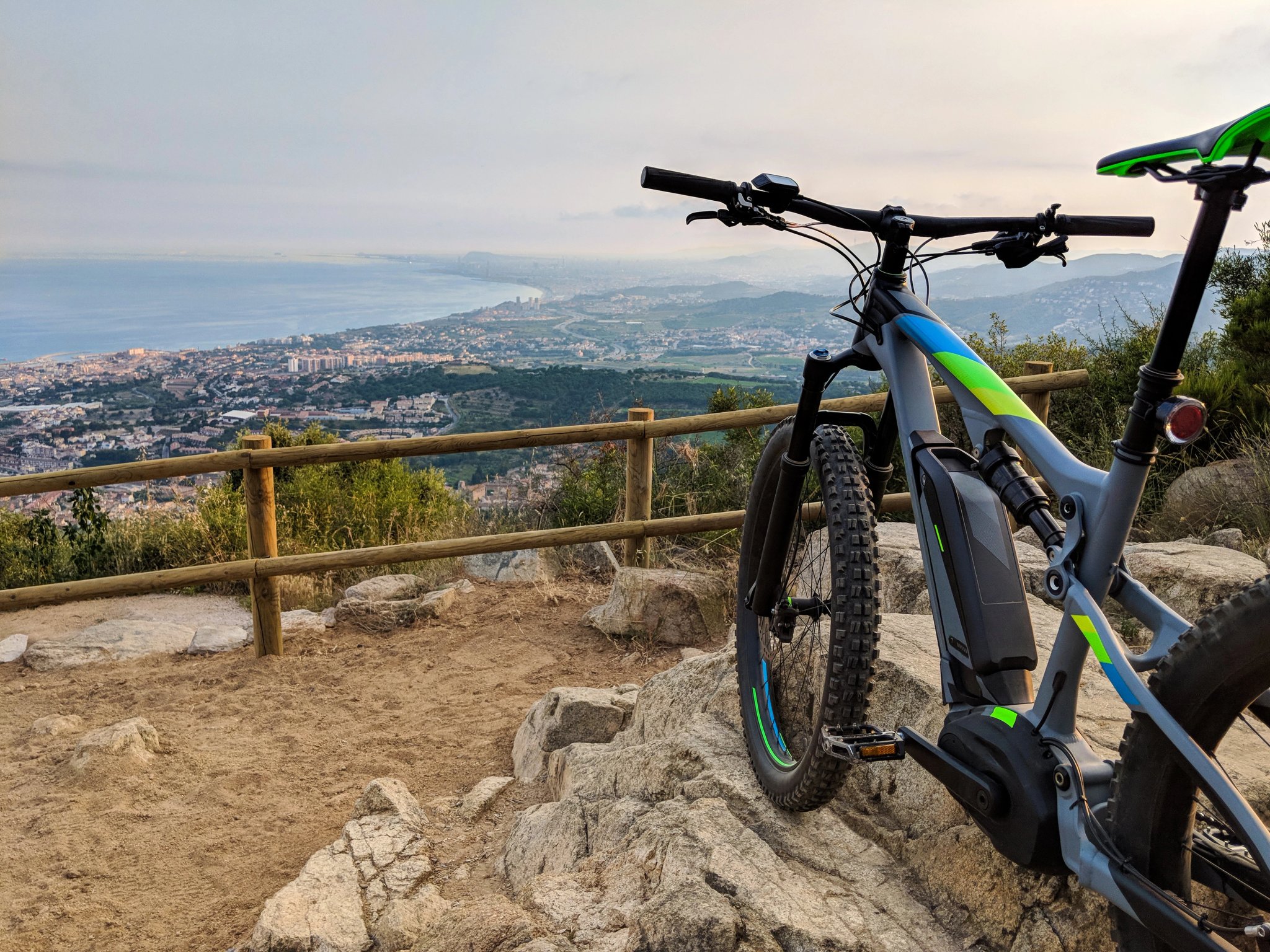
Top Cycling Routes in Girona
1. Els Àngels Loop (Short & Scenic)
Distance: ~50 km
Elevation gain: ~800 m
Start/Finish: Girona city
A popular introductory route that climbs to the Santuari dels Àngels, a viewpoint overlooking Girona and the surrounding hills. The ascent is steady, with moderate gradients and excellent road quality. This loop is ideal for warming up after a travel day or for riders who want a scenic, manageable climb close to the city.
Highlights:
Gradual climb through quiet, forested terrain
Excellent road surface with limited traffic
Wide views from the Els Àngels sanctuary
Perfect as a first ride or recovery day loop
This route is featured in our beloved Girona Gravel Cycling Holiday itinerary.
2. Rocacorba (The Pro Testpiece)
Distance: ~55 km
Elevation gain: ~900 m
Start/Finish: Girona city

Rocacorba is Girona’s most recognised performance climb, often used by professional riders to test form and power. The final kilometres reach gradients above 10%, making it a demanding ascent best suited for experienced cyclists. The rest of the loop rolls through farmland and quiet villages before the climb begins.
Highlights:
Iconic, steep ascent averaging around 10% in places
Benchmark climb for Girona’s pro community
Quiet rural roads leading to the base
A rewarding summit for strong climbers
You’ll get to ride this route during our Girona cycling tour.
3. Mare de Déu del Mont
Distance: ~110 km
Elevation gain: ~1,800 m
Start/Finish: Girona city

One of the toughest full-day rides in the region. The climb to Mare de Déu del Mont is long and sustained, offering big-mountain riding without needing to enter the Pyrenees. Expect a mix of rolling countryside, sustained elevation, and expansive views from the summit.
Highlights:
Major elevation challenge suitable for seasoned riders
Scenic mix of villages, forests, and open mountain roads
Panoramic views from the top
Excellent choice for a long ride during a multi-day stay
4. Costa Brava Ride to Tossa de Mar
Distance: ~100 km
Elevation gain: ~1,400 m
Start/Finish: Girona city

A classic ride from Girona to the Mediterranean. After an inland approach, the road from Sant Feliu de Guíxols to Tossa de Mar follows the coastline with constant bends, short climbs, and spectacular sea views. It’s one of the most scenic stretches of road in Catalonia.
Highlights:
Stunning coastal road with continuous viewpoints
Mix of inland climbs and seaside riding
Great route for photographers and scenery lovers
Ideal medium-to-long ride with varied terrain
This route is featured in our week-long cycling tour around Girona’s iconic landscapes.
5. Medieval Villages Loop (Monells, Pals, Peratallada)
Distance: 50–70 km (varies with route choice)
Elevation gain: Low to moderate
Start/Finish: Girona or Baix Empordà villages

A scenic and culturally rich loop through some of Catalonia’s best-preserved medieval towns. Terrain is mostly flat or gently rolling, making it suitable for riders of all levels. This is one of the most popular leisure and intermediate routes in the Girona region.
Highlights:
Ride through historic villages like Monells, Pals, and Peratallada
Gentle countryside terrain ideal for relaxed days
Vineyards, stone farmhouses, and open agricultural scenery
Ride this stunning route during our Girona Cycling Holiday!
6. Sant Feliu de Guíxols to Llafranc Coastal Route
Distance: 30–45 km (depending on variations)
Elevation gain: ~500–800 m
Start/Finish: Sant Feliu de Guíxols / Llafranc
A short but stunning coastal stretch with rolling climbs, sea views, and small coves. This route connects several of the Costa Brava’s most attractive seaside towns and is well suited for riders who enjoy scenic coastal riding without long distances.
Highlights:
Mediterranean scenery along cliffs and coves
Frequent short climbs and winding descents
Access to Llafranc, Calella de Palafrugell, and Tamariu
Explore these stunning part of Girona during this bike tour.
7. Cap de Creus Peninsula Ride
Distance: varies (60–100 km depending on start point)
Elevation gain: moderate to high
Start/Finish: Roses or Cadaqués

One of Catalonia’s most dramatic coastal landscapes. The Cap de Creus Peninsula features rugged terrain, exposed cliffs, and continuous short climbs. The road surfaces vary but are suitable for experienced riders seeking a visually striking route.
Highlights:
Spectacular Mediterranean coastline and headlands
Rugged, isolated terrain with minimal traffic
Short, punchy climbs with open sea views
You’ll get to ride it on our gravel cycling holiday.
Suggested Itinerary 1: The Ultimate Ride
A multi-day ride along the Costa Brava and through the medieval villages of Baix Empordà is one of the most rewarding ways to experience the Girona region.

Suggested Itinerary
Day 1: Arrival in Girona
Day 2: Girona to Sant Feliu de Guíxols
Day 3: Tossa de Mar
Day 4: Sant Feliu de Guíxols to Llafranc
Day 5: Llafranc, Calella de Palafrugell & Tamariu
Day 6: Monells and the Medieval Villages
Day 7: More Medieval Villages & Dalí’s Castle Museum
Day 8: Departure to Girona
This type of itinerary is perfect if you want to discover a new part of the region every day — but it also means managing luggage transfers, daily navigation, hotel changes, and route logistics.
We’ve already covered the logistics: GPS-mapped out the stages, coordinated the hotels, and included the most scenic and iconic parts of the Costa Brava and Baix Empordà so you can simply ride and enjoy the journey.
Check out the tour:
Suggested Itinerary 2: Gravel Loop
This itinerary is designed for cyclists who want to experience Girona’s most iconic climbs, rugged coastal headlands, volcanic landscapes, and its best gravel and mixed-terrain regions.

Suggested Itinerary
Day 1: Arrival in Girona
Day 2: Els Àngels – L’Escala
Day 3: Cap de Creus Peninsula
Day 4: Empordà Vineyards & Besalú
Day 5: Garrotxa Volcanoes
Day 6: Rocacorba & Girona
Day 7: Departure
We’ve brought all elements of the logistics together for you: mapped and tested the routes, arranged cyclist-friendly accommodation, and built a smooth progression of climbs and landscapes so you can focus entirely on the ride.
Check out the tour:
Suggested Itinerary 3: Barcelona to Girona
This itinerary connects two of Catalonia’s most iconic cycling hubs: Barcelona and Girona. It combines coastal plains, quiet inland roads, rolling countryside, and historic towns, giving riders a smooth progression from urban landscapes to rural Catalonia and finally into Girona’s renowned cycling territory.

Suggested Itinerary
Day 1: Arrival in Barcelona
Day 2: Barcelona to Caldes de Montbui
Day 3: Caldes Loop Ride
Day 4: Caldes de Montbui to Vic
Day 5: Vic Loop Ride
Day 6: Vic to Girona
Day 7: Girona Loop Ride
Day 8: Departure from Girona
Cycling point-to-point through multiple regions requires coordinated logistics — daily luggage transfers, hotel bookings, and detailed route planning.
This itinerary has all of that built in, guiding you from Barcelona’s vibrant cycling culture through Catalonia’s inland landscapes and directly into Girona’s world-class riding terrain.
Check out the tour:
Not quite set on Girona? Not to worry - there’s an abundance of amazing cycling tours in Spain. If you’re not sure where to start, you can always reach out - we are here for you!
Top Things You’ll See
Girona is known for its wide geographic and cultural diversity, offering terrain that ranges from coastline and rolling farmland to forested hills and the lower slopes of the Pyrenees.
Its cultural heritage spans over 2,000 years, reflected in well-preserved architecture, traditional Catalan villages, and landscapes shaped by centuries of agriculture.
Here are our favorite places to see:
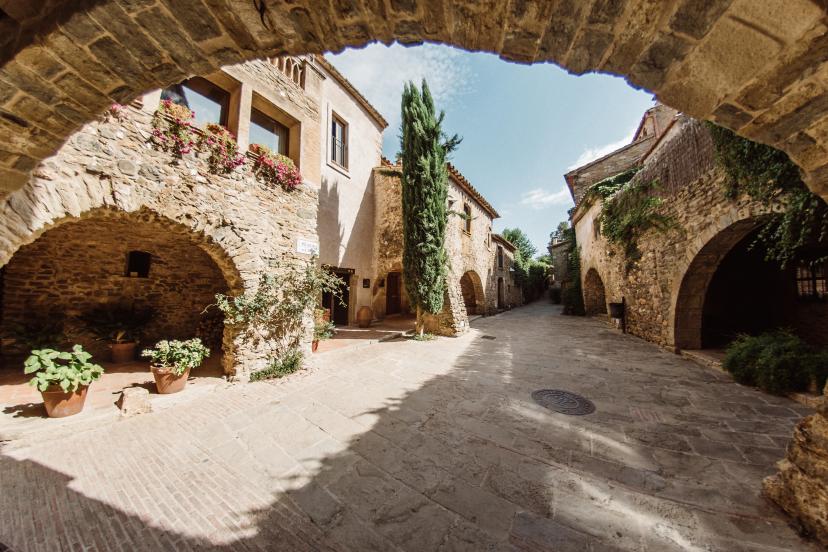
Monells
Monells is a picturesque village in the Baix Empordà region, famed for its quaint medieval streets and charming central square. Its stone buildings, historic arches, and quiet lanes create a storybook setting that transports visitors back in time. Monells is ideal for leisurely exploration, photography, and soaking up authentic Catalan village life.
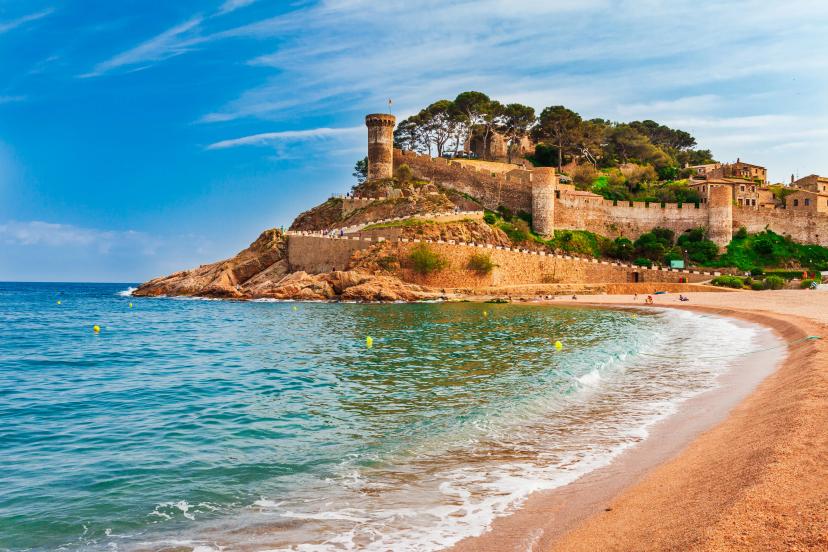
Costa Brava Coastline
The Costa Brava stretches along northeastern Spain with rugged cliffs, hidden coves, and crystal-clear waters that create one of Europe’s most dramatic coastlines. Picturesque fishing villages, pristine beaches, and scenic promontories make it a paradise for nature lovers, photographers, and anyone seeking breathtaking Mediterranean views. From the bustling town of Tossa de Mar to quiet coves near Begur, the Costa Brava offers an unforgettable blend of beauty, culture, and seaside charm.

Sant Feliu de Codines
Nestled in rolling hills, Sant Feliu de Codines is a picturesque town with traditional stone houses and medieval churches. Surrounded by forests and countryside trails, it’s ideal for exploring peaceful landscapes, historic plazas, and enjoying local festivals. Its quiet charm and scenic outlooks make it a quintessential example of Catalan rural life.
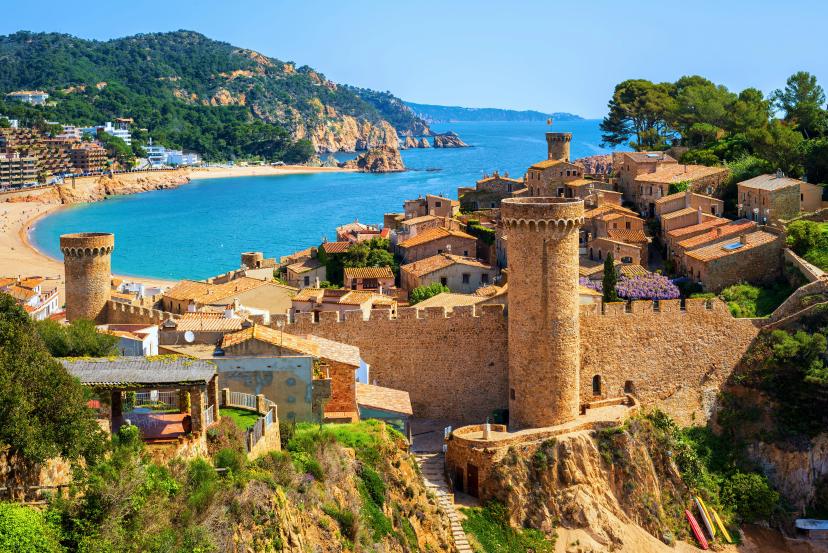
Tossa de Mar Castle
Tossa de Mar Castle, perched above the Mediterranean Sea, is a medieval fortress that crowns the town with its impressive walls and towers. Originally built in the 12th century, the castle protected Tossa from pirate attacks and offers visitors panoramic views of the coastline and town below. Walking along its ramparts, exploring cobbled streets, and admiring the blue waters of the sea, visitors experience a perfect blend of history, architecture, and natural beauty.

Cap de Creus Peninsula
Cap de Creus Peninsula is a stunning natural park covering 140 km², where jagged cliffs meet the Mediterranean Sea. It is Spain’s easternmost point and home to unique geological formations, including dramatic rock spires sculpted by wind and waves. The area inspired Salvador Dalí, and visitors can explore hiking trails, lighthouses, and secluded coves while spotting rich biodiversity, including seabirds and endemic plants.

Spanish Pyrenees
The Pyrenees form a majestic mountain range along Spain’s northern border, stretching through Catalonia and Aragón with soaring peaks, deep valleys, and alpine meadows. This dramatic landscape offers breathtaking vistas, glacial lakes, and charming mountain villages. The region is a paradise for hikers, nature lovers, and anyone seeking stunning scenery and a taste of pristine wilderness.
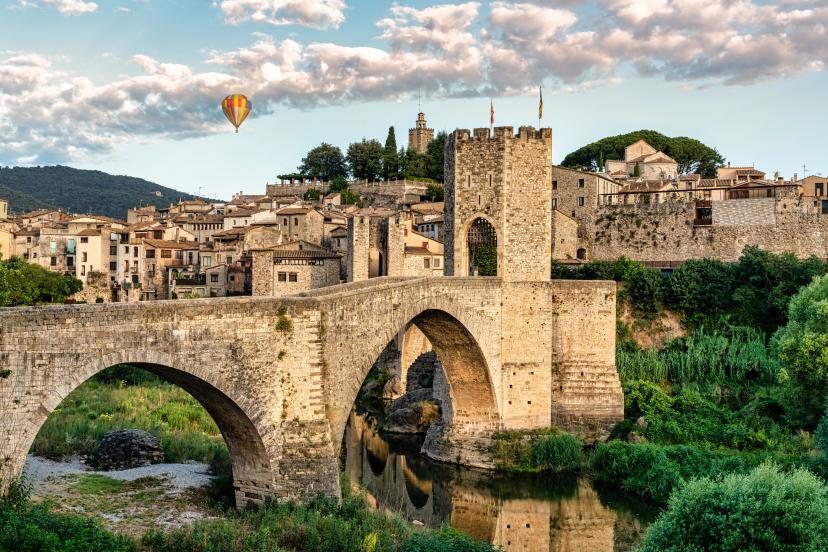
Besalú
Besalú is a medieval town with a population of around 2,500, renowned for its 12th-century Romanesque bridge over the Fluvià River. The town preserves a Jewish Quarter, churches from the 10th–12th centuries, and a monastic site. Its cobbled streets, stone houses, and historic architecture make Besalú a living museum of medieval Catalonia.
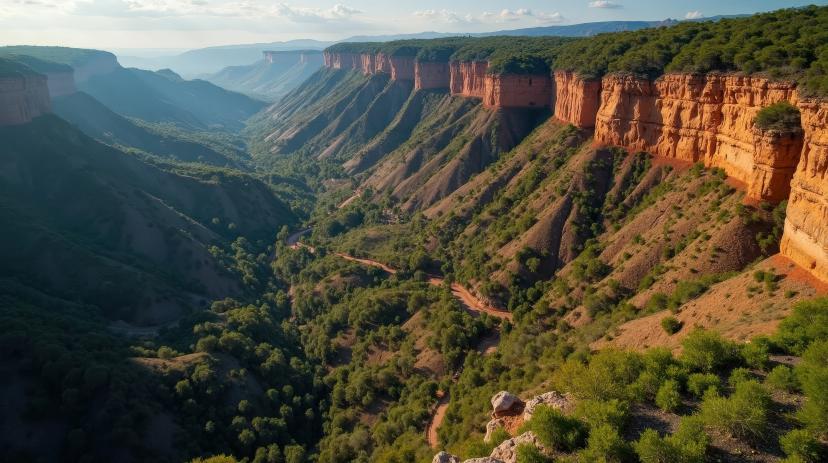
Garrotxa Natural Park
Garrotxa Natural Park covers 120 km² and is famous for its 40+ extinct volcanic cones and over 20 lava flows. It features lush beech and oak forests, rich biodiversity, and hiking trails through towns like Olot and Santa Pau. Geologists and nature lovers visit to study its volcanic formations, while walkers and photographers enjoy its unique landscape and tranquil rivers.
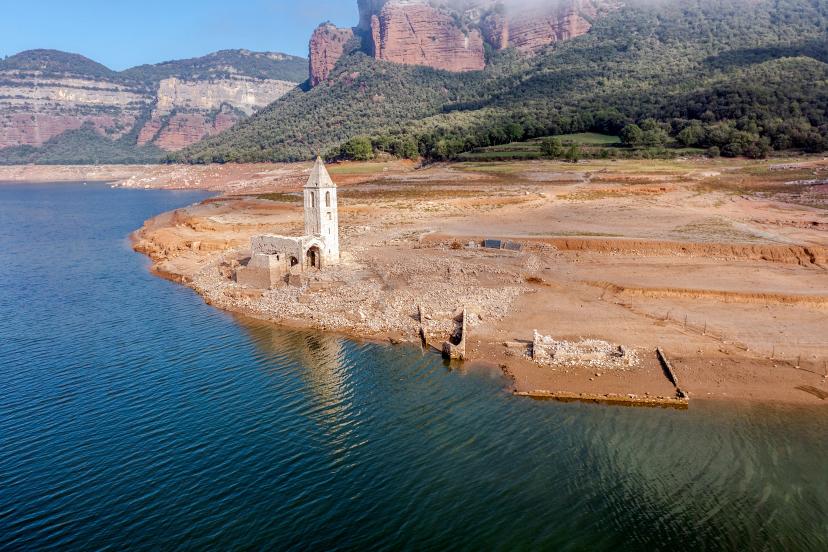
Ter River Valley
The Ter River Valley follows the 208 km-long Ter River, which originates in the Pyrenees and flows to the Mediterranean. The valley features fertile farmland, medieval villages, and natural parks like the Parc Natural de la Zona Volcànica de la Garrotxa. Visitors can explore historic towns, riverside paths, and scenic viewpoints while experiencing the cultural and agricultural heart of Catalonia.
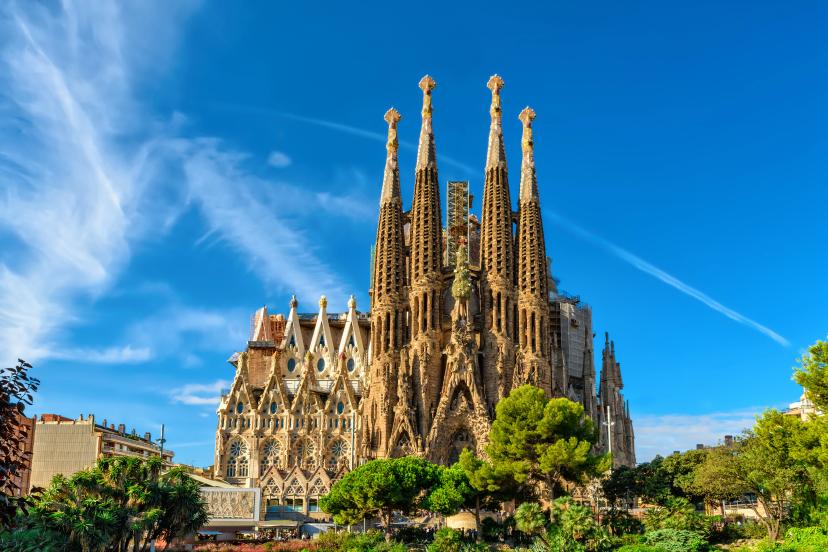
Sagrada Familia
Construction began in 1882 on Antoni Gaudí’s masterpiece, which has become one of the most iconic landmarks in Spain. Its soaring towers, intricate façades, and kaleidoscopic stained glass interiors attract millions of visitors annually. Recognized as a UNESCO World Heritage Site, the basilica blends Gothic and Art Nouveau styles, showcasing Gaudí’s innovative approach to architecture and natural forms.

Barcelona
With 1.6 million residents, Barcelona is a vibrant Mediterranean metropolis blending modernist architecture, beaches, and rich cultural heritage. Visitors can stroll through the Gothic Quarter, admire Gaudí’s masterpieces, and enjoy bustling squares filled with cafés and street performers. The city hosts renowned museums, lively markets, and a culinary scene famous for tapas and Catalan specialties.

Girona Old Town
Girona’s historic center is defined by medieval walls, narrow stone lanes, and a riverside layout that reflects Roman, Jewish, and Catalan heritage. The cathedral steps, Arab Baths, and preserved Jewish Quarter create a compact core that’s easy to explore between riding stages. Its position near major Pyrenean routes makes the old town a frequent start or finish point for cyclists moving between the coast and the mountains.
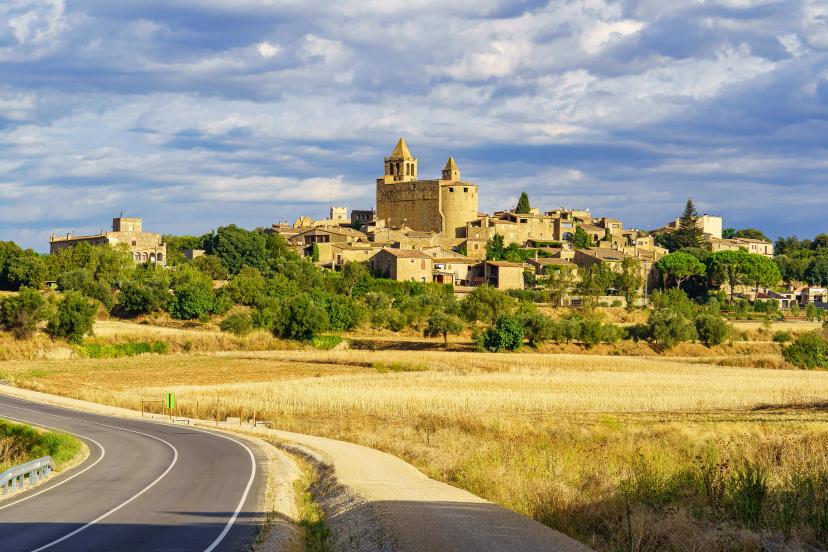
Madremanya
Madremanya is a medieval village with cobbled streets, stone houses, and a 14th-century castle at its heart. Surrounded by olive groves and vineyards, it offers a glimpse into traditional Catalan life. The village is perfect for strolling historic lanes, visiting artisan shops, and enjoying the serene countryside atmosphere.

Collserola Natural Park
Spanning over 8,000 hectares on Barcelona’s outskirts, Collserola Natural Park is home to more than 1,000 plant species and abundant wildlife, including foxes, wild boars, and a variety of birds. Trails wind through forests and hills, offering panoramic views over the city and Mediterranean coast. It’s a vital green lung for Barcelona, ideal for walking, hiking, and reconnecting with nature.
If you plan to explore more of the country beyond Girona, make sure to check our overview of Spain’s top highlights for inspiration.
When to Go
With a mild Mediterranean climate, low rainfall for most of the year, and quick access to both coastal and inland terrain, the area offers excellent riding conditions almost every month. Even in winter, temperatures stay moderate, making Girona a popular base for training camps and long-season cycling.
March–June: Prime season — stable weather, moderate temperatures, and excellent visibility
July–August: Warm and dry — ride early to avoid mid-day heat, especially on inland climbs
September–October: Quiet roads, warm conditions, and ideal light for scenic routes
November–February: Not recommended — cold, wet spells and potential snow/ice in higher areas

Below is an overview of what each season offers so you can plan your trip with confidence.
Spring (March–May)
Spring is one of the best times to cycle Girona. Days are comfortably warm, roads are quiet, and the countryside is at its greenest. This is an ideal period for longer rides, steady climbs, and exploring both coastal and inland routes without the heat of summer.
Temperatures: 15–24 °C
Best for: All cyclists — optimal mix of warmth, daylight, and predictable weather
Why ride in spring:
Ideal temperatures for endurance rides
Clear visibility and crisp air
Excellent conditions for both road climbs and gravel routes
Long but not hot days

Summer (June–August)
Summer in Girona is warm and dry. Inland climbs can feel hotter, while coastal routes remain breezier and more comfortable. Early starts are recommended, especially for longer days or routes with significant elevation.
Temperatures: 25–32 °C (cooler on the coast, warmer inland)
Best for: Early riders, coastal loops, short and medium-distance days
Good to know:
Expect hotter temperatures on south-facing climbs
Coastal roads are more comfortable in the afternoon thanks to sea breezes
Start early to avoid mid-day heat
Popular season — expect more travellers in coastal towns

Autumn (September–November)
Autumn is another excellent season for cycling in Girona. Temperatures cool down, winds are generally light, and conditions remain very stable through October. It’s one of the best periods for long-distance riding and hill-focused days.
Temperatures: 18–27 °C early autumn; cooler by November
Best for: Riders seeking mild weather, quiet roads, and consistent conditions
Why ride in autumn:
Comfortable temperatures without summer heat
Reduced traffic after peak holiday season
Excellent visibility and clean air
Ideal for big climbs and gravel days

Winter (December–February)
Winter is the least suitable season for cycling in Girona. While temperatures at lower elevations may stay mild, the region frequently experiences cold fronts, morning frost, and wet conditions.
Routes that pass through higher elevations — especially toward the foothills of the Pyrenees — can see snow, ice, or freezing temperatures, making certain climbs and shaded areas unsafe for riding.
Temperatures: 7–14 °C (lower in inland hills)
Best for: Not recommended for multi-day cycling holidays
Good to know:
Snow and ice are possible on higher routes and shaded sections
Wet and cold conditions reduce grip on descents
Shorter daylight hours limit longer rides
Coastal routes may remain rideable, but expect colder mornings

Where to Check the Weather
Girona’s weather is generally predictable, but conditions vary between the coast, inland plains, and foothills. Checking a reliable forecast helps you plan your route and time your ride.
Best sources:
AEMET – Spain’s official forecast; most accurate for towns and coast
Windy – Great visual wind maps for planning exposed routes
Yr.no – Simple, accurate forecasts for island climates
Where to Stay
Choosing the right base in Girona can shape your entire cycling experience. The region is compact and easy to navigate, but where you stay will influence how quickly you can access key routes, how peaceful your evenings are, and how convenient your daily logistics become.
Girona offers several excellent areas that are well-suited for cyclists, each with its own unique advantages depending on the type of trip you’re planning.
What to Look For in Cycling-Friendly Accommodation
Secure bike storage — locked rooms or dedicated garages
Bike maintenance facilities — pumps, tools, washing areas, or a nearby workshop
Early breakfast options — especially important for summer rides
Easy access to main cycling routes — so you can start riding quickly without navigating busy traffic
Quiet surroundings — ideal for rest days and recovery
Close proximity to cafés, supermarkets, and restaurants — useful when staying multiple nights
Comfortable rooms with good sound insulation — Girona attracts many cyclists, so restful sleep matters
Best Areas to Stay
Below are the most common and cyclist-friendly places to base yourself in the Girona region.
The historic centre is compact, walkable, and full of character. It’s popular with cyclists who enjoy staying close to cafés, restaurants, and the city’s cycling community.
Good for: riders who like being near culture, amenities, and the social side of Girona.
Benefits: quick access to cafés, bike shops, river paths, and evening strolls.
Located just beyond the city walls, this semi-rural area is ideal for cyclists seeking direct access to nature and quieter surroundings.
Good for: early starts, gravel riders, or anyone wanting a peaceful base within walking distance of the centre.
Benefits: immediate access to Les Gavarres and low-traffic climbs.
If your itinerary includes multiple coastal days, staying near the Costa Brava can be a great alternative.
Good for: riders prioritising sea views, rolling coastal terrain, and relaxed evenings.
Benefits: access to cliffside roads, swimming spots, and quieter roads early in the day.
A scenic region filled with agricultural plains, small villages, and traditional stone farmhouses. It’s a popular choice for cyclists wanting peaceful surroundings and quick access to rolling terrain and medieval villages.
Good for: gravel riders and those seeking calm, rural bases.
Benefits: extremely quiet roads and excellent access to the Medieval Villages Loop.
All our cycling tours include carefully selected 3-star hotels, chosen for their cyclist-friendly facilities and locations. These typically offer:
Daily breakfast
Secure bike storage
Comfortable rooms designed for multi-night stays
Easy access to the start of the day’s routes
Upgrades are possible where available, and we’re always happy to discuss preferences or specific needs.
If you have questions about accommodation or want help choosing the right base for your trip, feel free to reach out.
How to Get to Girona
Girona is well-connected to major international travel routes, making it easy for cyclists from abroad to reach the region. The city benefits from two nearby international airports and fast onward connections by train or road.
By Air
1. Barcelona–El Prat International Airport (BCN)
Barcelona is the main international gateway for Girona and the most convenient option for long-haul travellers.
Distance to Girona: ~100 km
Connections: direct trains, shuttle buses, taxis, rental cars
Flight availability: year-round global routes from Europe, the Middle East, North America, and beyond
Travel time to Girona: 1–1.5 hours depending on transport method
2. Girona–Costa Brava Airport (GRO)
A smaller international airport located close to Girona.
Distance to Girona: ~12 km
Connections: taxis, airport buses, rental cars
Flight availability: seasonal international routes, mostly from European cities
Travel time to Girona: 15–25 minutes
Although seasonal, it’s the closest airport to the city and very convenient when flights are available.
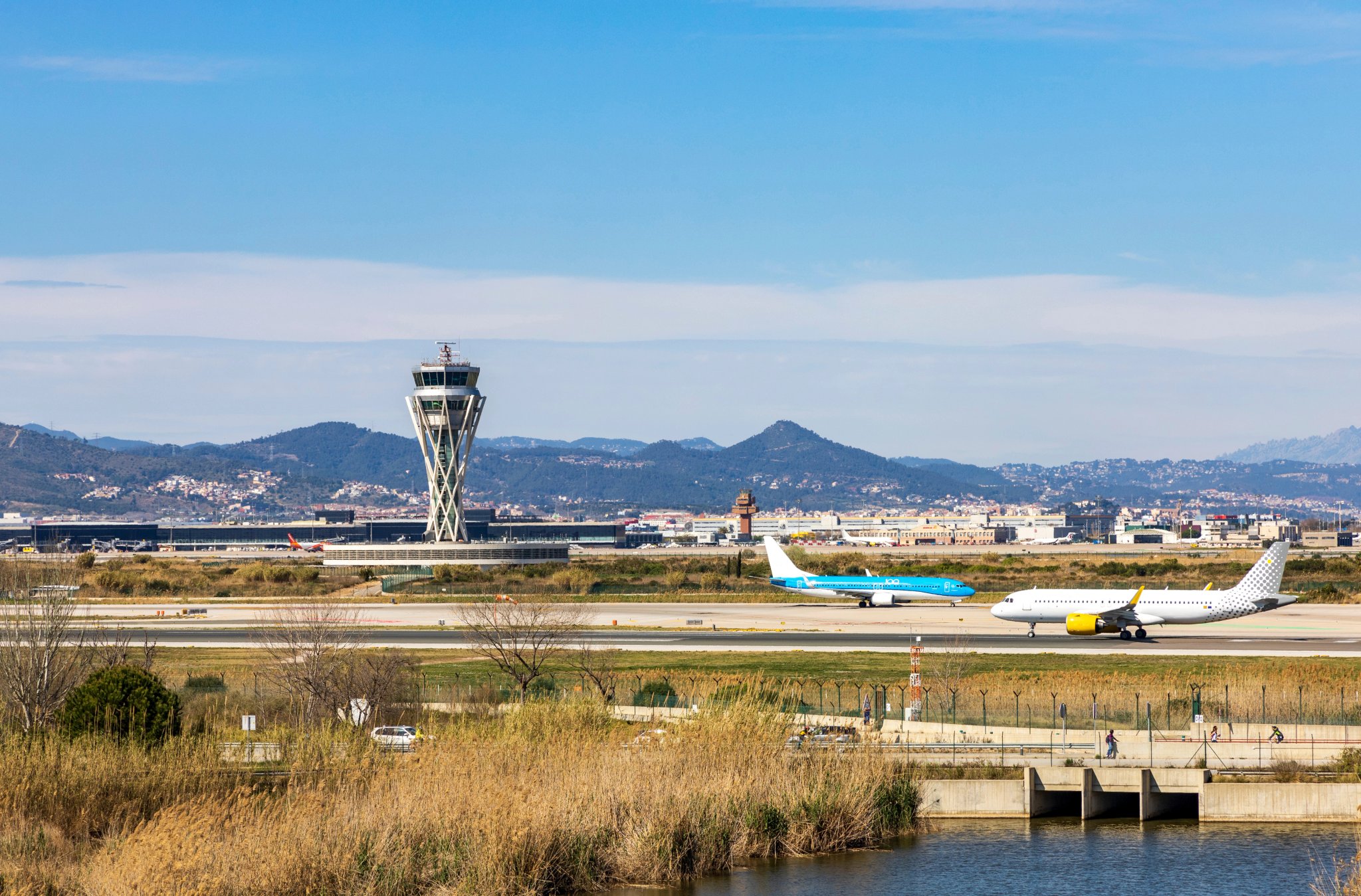
Arriving From the Airport
1. From Barcelona Airport (BCN)
Train: Take the R2 Nord commuter line to Barcelona Sants → high-speed AVE/AVANT train to Girona
Bus: Direct airport bus (seasonal) or shuttle to Barcelona city → intercity bus to Girona
Car: ~1 hour via AP-7 motorway
2. From Girona Airport (GRO)
Bus: Airport shuttle to Girona Bus Station
Taxi: ~20 minutes to the city
Car: straightforward drive on the C-25 or N-II
Need more travel-related information, including travel documents, currency etc? Check here.
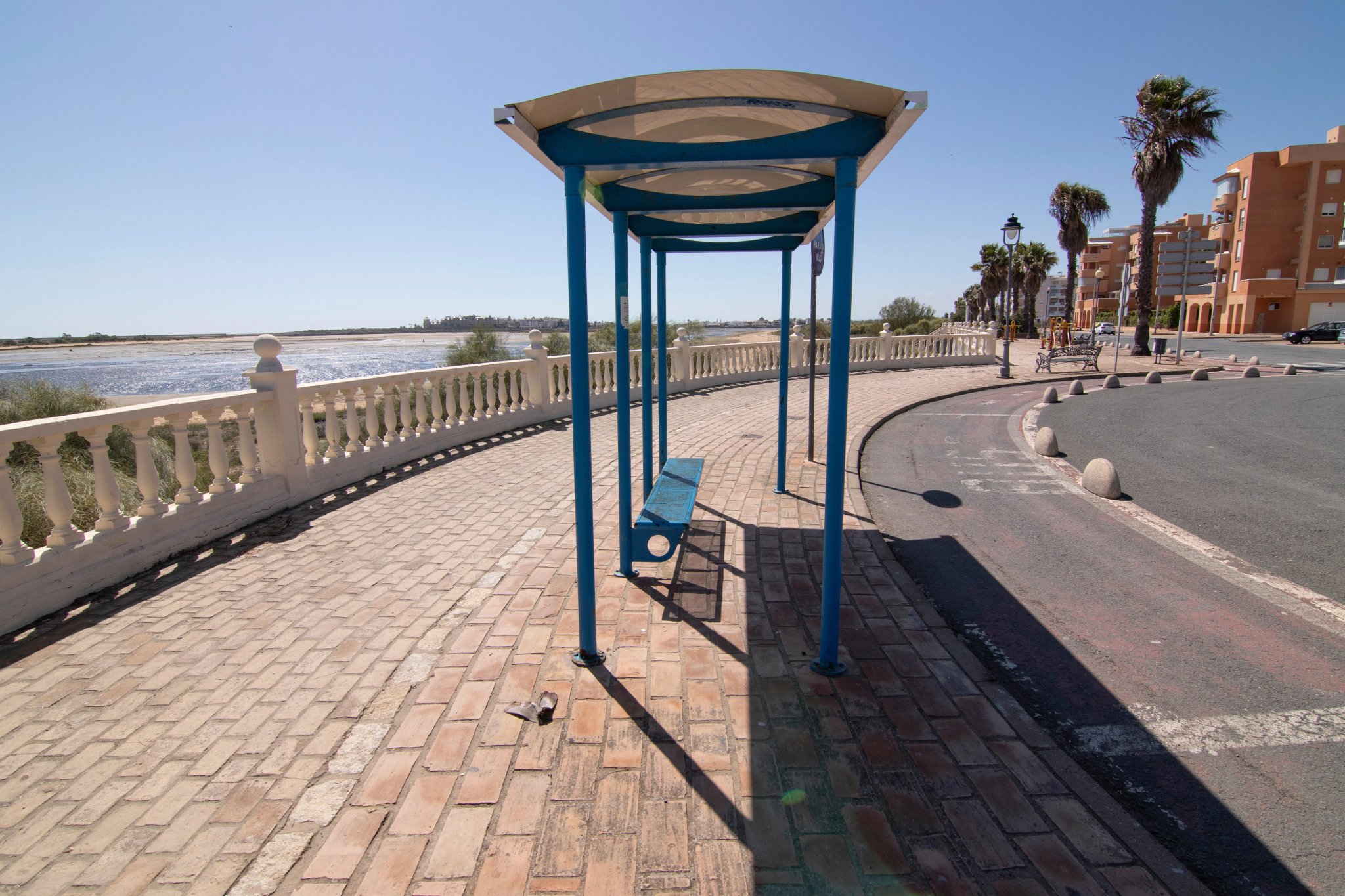
Best Cycling Tours in Girona
Girona offers an exceptional variety of routes, landscapes, and riding styles — from coastal roads and quiet countryside loops to iconic climbs and well-maintained gravel networks.
Below, you’ll find a selection of tours that showcase the very best of Girona’s cycling terrain.
We take care of all the essential logistics, including:
Daily GPS tracks for smooth navigation
Luggage transfers between accommodations on point-to-point itineraries
Pre-booked hotels in cyclist-friendly locations
Local support available throughout the trip
Optional bike rental and basic assistance when needed
Clear daily briefings and practical planning tips
You’re free to ride at your own pace, explore the landscapes that interest you most, and enjoy Girona’s cycling terrain without having to manage the logistics behind the scenes.
If you’d like help choosing the right tour for your preferences or schedule, feel free to reach out — we’re always happy to advise.

Hassle-Free
We handle itineraries, accommodations, and anything else you prefer not to deal with, so you can enjoy a carefree holiday.

Completely Customizable
Flexibility is our middle name — whether you want more or less, or just beyond ordinary, we’ll make it happen.

Book with confidence
We are a financially protected company, fully bonded and insured, keeping your money safe and allowing you to travel with confidence.

Unbeatable support
Our 24/7 customer support is where we show our passion, bringing you a better experience by making your well-being our number one priority.
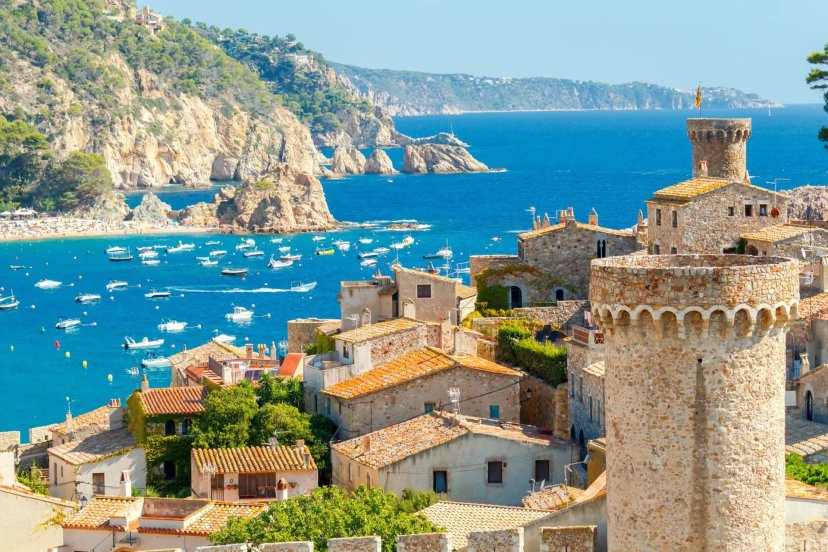
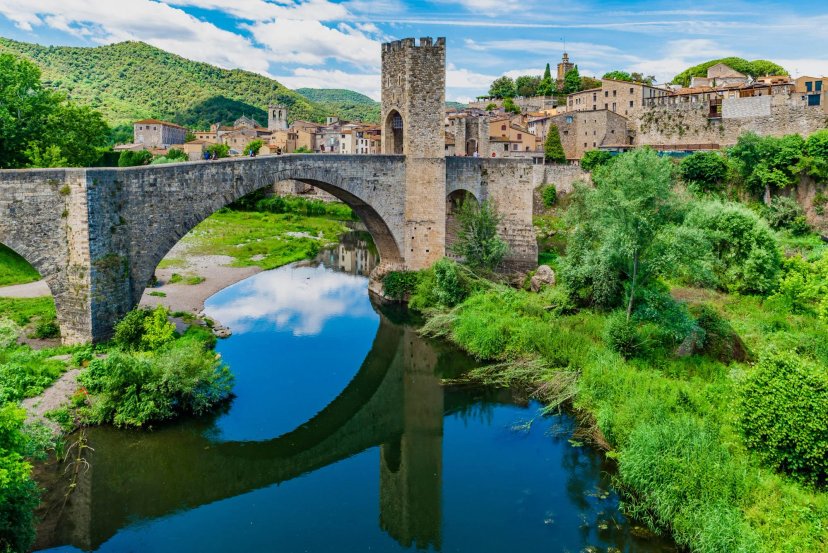

.jpg&w=3840&q=75)
